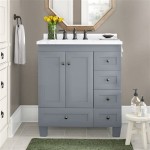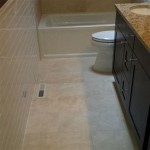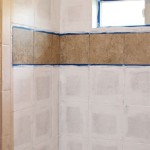Best Way To Get Mould Off Bathroom Tiles
Mould growth on bathroom tiles is a common problem due to the consistently damp and humid environment. Not only is mould unsightly, but it can also pose health risks, particularly for individuals with respiratory conditions. Effectively removing mould requires understanding the best cleaning methods and prevention strategies.
Identifying the type of mould present is the first step. While most bathroom mould appears as black spots, it's crucial to differentiate between surface mould and deeply ingrained mould. Surface mould can be tackled with readily available cleaning solutions, whereas ingrained mould might necessitate professional intervention.
Several effective methods exist for removing surface mould from bathroom tiles. White vinegar is a natural and readily accessible solution. Its acidic properties effectively kill mould spores. Applying undiluted white vinegar to the affected areas and allowing it to sit for an hour before scrubbing with a brush often proves sufficient. Rinsing the area thoroughly with water completes the process.
Baking soda offers another natural cleaning alternative. Its mildly abrasive properties help to lift mould from the tile surface. A paste of baking soda and water can be applied to the mouldy areas and left for a few minutes before scrubbing. Rinsing the tiles with clean water afterwards removes any residue.
Hydrogen peroxide, available in most pharmacies, is a stronger cleaning agent effective against more stubborn mould. A 3% hydrogen peroxide solution can be sprayed directly onto the mould and left for approximately 30 minutes. Scrubbing the area with a brush and rinsing with water ensures complete removal of the mould and cleaning solution.
Commercial mould and mildew removers are formulated specifically to tackle mould growth. These products often contain bleach, a powerful disinfectant. When using bleach-based cleaners, it's crucial to ensure adequate ventilation in the bathroom. Following the manufacturer's instructions carefully is paramount for safe and effective mould removal. Wearing gloves and eye protection is recommended when handling these chemicals.
For ingrained mould, professional cleaning services may be necessary. These professionals possess specialized equipment and expertise to remove deeply embedded mould effectively and safely. They also have access to stronger cleaning solutions that are not typically available for consumer purchase.
Preventing mould growth is as important as removing it. Effective ventilation is key to reducing humidity levels in the bathroom. Running an exhaust fan during and after showers helps to expel moisture-laden air. Opening a window, if available, provides additional ventilation.
Regularly cleaning bathroom tiles with a suitable cleaning solution can prevent mould from taking hold. Wiping down tiles after each shower removes excess moisture and inhibits mould growth. Paying particular attention to grout lines, where moisture tends to accumulate, is crucial.
Addressing any leaks promptly prevents water from accumulating and creating a breeding ground for mould. Leaking pipes or faucets should be repaired immediately. Ensuring adequate sealant around bathroom fixtures, such as sinks and tubs, also prevents water seepage.
Maintaining a consistent cleaning routine and addressing moisture issues are the most effective ways to prevent mould growth on bathroom tiles. Regularly cleaning the tiles, ensuring proper ventilation, and promptly fixing leaks will significantly reduce the likelihood of mould recurrence.
Choosing the right cleaning method depends on the severity of the mould infestation. For surface mould, natural cleaning solutions like vinegar and baking soda are often sufficient. More stubborn mould may require stronger solutions like hydrogen peroxide or commercial mould removers. Professional cleaning services are recommended for ingrained mould or when dealing with extensive mould growth.
Implementing preventative measures is the best long-term solution for combating mould in the bathroom. By controlling moisture levels, ensuring adequate ventilation, and maintaining a consistent cleaning schedule, homeowners can effectively minimize the risk of mould growth and maintain a healthy bathroom environment.
Properly addressing mould growth on bathroom tiles not only enhances the aesthetic appeal of the bathroom but also contributes to a healthier living environment. By understanding the various cleaning methods and implementing preventative strategies, homeowners can effectively tackle mould and prevent its recurrence.
Maintaining a clean and dry bathroom is paramount for preventing mould growth. Consistent cleaning practices combined with proper ventilation significantly reduce the likelihood of mould formation, promoting a healthier and more pleasant bathroom environment.

How Do I Remove Black Mould From Shower Floor

How To Clean Mold In Shower Grout Tips And Tricks Certified Care

Black Mold In The Shower How To Clean It Kitchen With Matt

How To Clean The Grout Between Your Wall Tiles And Revamp Mouldy Mastic

The Top 4 Causes Of Bathroom Mould How To Get Rid It

Black Mold In The Shower How To Clean It Kitchen With Matt

What Is The Best Way To Clean Shower Grout Mold Anita S Housekeeping

What Do About Black Mold In The Bathroom Bob Vila

Black Mold In The Shower How To Clean It Kitchen With Matt

I Found Mold In The Bathroom What Should Do
Related Posts







